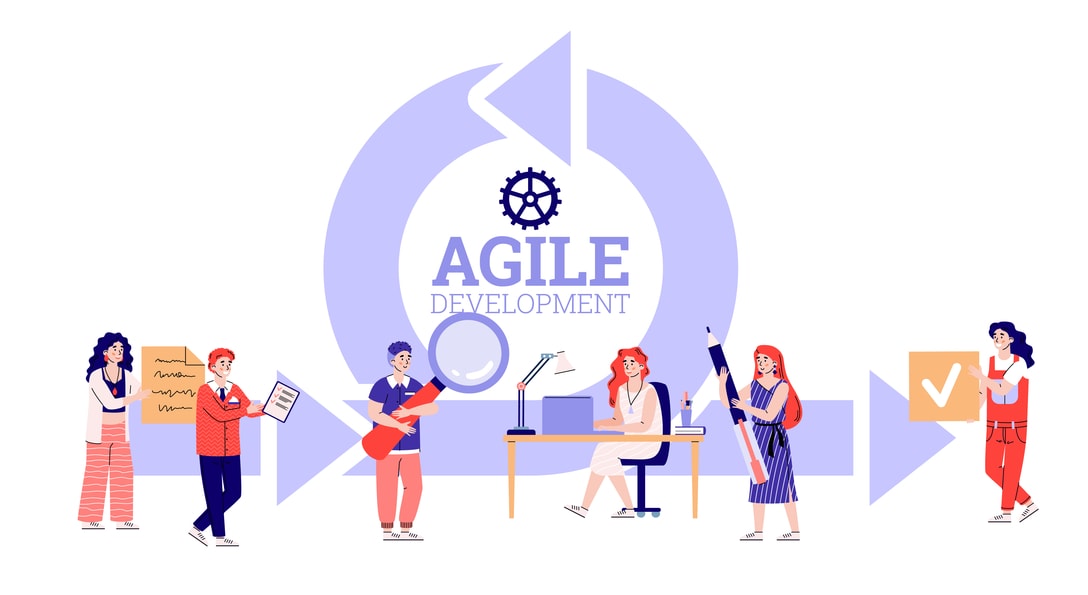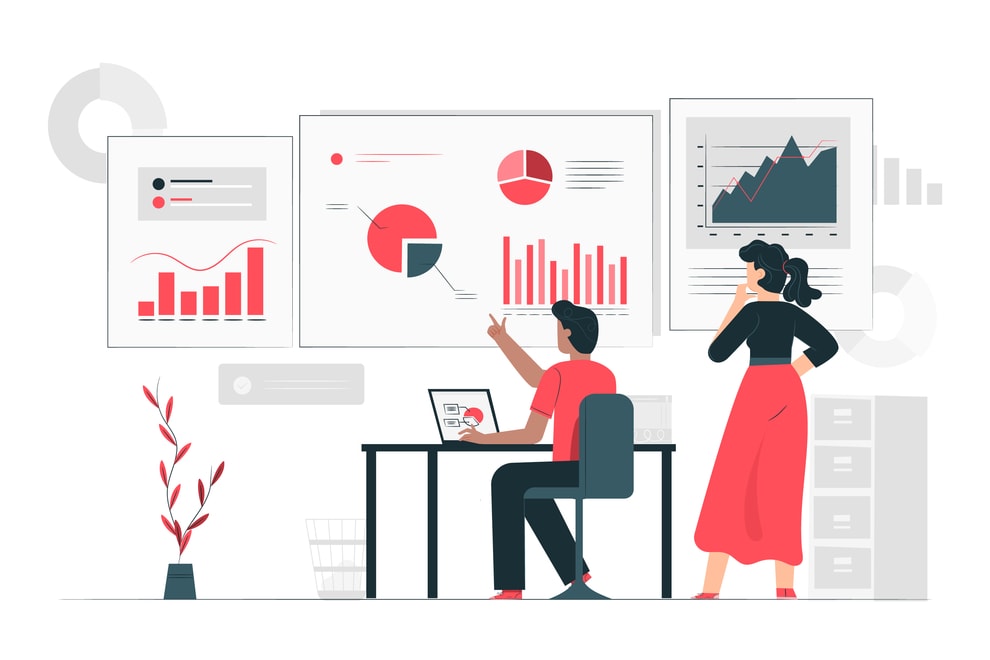The Maturity Model in business is a way to measure how well an organization has been able to execute its strategy. Maturity models are presented to a lot of different audiences: from project managers, software developers, CEOs, academic teachers, or business leaders.
In the business world, you will find various levels of maturity when it comes to organizations. There are some that have not yet achieved a level of excellence and others that have surpassed expectations with their achievements in a variety of areas. The Maturity Model in Business is an assessment tool designed to help organizations identify where they stand in regards to the five aspects: customer focus, organizational structure, people management, process management, and systems integration.
There are different maturity models you may use depending on your needs: from the Capability Maturity Model to the Agile Methodology one or even the Project Management one.
A maturity model or framework provides guidance on how to improve the security within an organization. It enables you to measure, analyze and manage your information security with common industry terms that are acceptable for all business units. The more mature you are, the better you understand what’s really going on in your organization.
You can define which policies are more important than others and make compliance easier by using this knowledge. A maturity model will help you identify target areas where improvements could be made – some improvements will have more impact on improving security while others simply make it easier for everyone to comply with organizational standards. It also allows you to compare yourself against other organizations in order to identify best practices that you can implement.
Maturity models often rely on a series of stages, each representing an increased level of maturity, from ad hoc to managed security programs. Beyond this point, you have a well-managed organization with ‘good enough’ protection that has no need to track its progress or measure itself against others.
The History Of Maturity Models
The maturity model is not a new concept and its recent popularity with it remains significant. Capacity Maturity Model (CMM) developed by Software Engineering Institute (SEI) originally existed in 1987. Future horizons are uncertain of project management standards. Maturity by itself doesn’t guarantee organizational success.
The scale represents the measure and the indicators of progress. A maturity model helps identify deficiencies but not fix them. A maturity model shows the capacity of an organization/system to achieve continuous improvement. The maturity model is a loose way to gauge how well your organization is at self-improvement. It has the idea that people always try and evaluate and improve how that organization runs.
A mature maturity level is a clearly identified evolutionary plateau toward the completion of a mature software process. Each maturity level is composed of a set of process goals that stabilize a significant part of the process when satisfied. Achieving each level of maturity framework establishes a distinct component in the software process this increases the process capability of the organization. The five maturity levels are a scale used to measure the maturity of the organization’s Software and for defining its capability. They also help organizations prioritize improvements.
The concept of maturity models continuously develops as new approaches and new ideas are taken into consideration. Some models are created to tackle specific industries from software development to marketing and human resources. Some examples of maturity models are the Project Management Institute OPM Maturity Model, BPO Maturity Model, and the Process Management Maturity Assessment.
Business Process Maturity Models Should Have A Practical Use For All Managers
This is especially true for organizations that wish to follow the lead of industry leaders and adopt some form of agile development or lean management practices. When someone says they want to be more Agile what they usually mean is that they want to do less planning and have fewer meetings because their current process consumes too much time without adding sufficient value.
Processes do not live in an ivory tower! They should go wherever the people are as nature intended. Many others focus too much on design. There are so many goals to achieve success but little discussion exists in models that describe how to go about this. This is descriptive without prescriptive. We need a business process maturity model in a holistic approach based upon business process management. Anything practical,
Do you want to implement the maturity model for your business?
Optimized processes
At the initial level, it’s common to have disorganized processes. Once you know how your system works, you need to start to examine it with a critical eye and try to improve it. The. By this time, you have developed the facilities to provide rich and precise data. This helps you discover the nature of an organization in a way you can’t. It helps you identify an event as of when it happens. This is a true model of your business that lets you know not only what happened last week but what will happen next. To take the system to the next level you must leverage those values to optimize the outputs. It requires performing scientific analyses on your processes and searching for big or just fractional improvements.
Managed processes
Processes should guide how you run your operations. You have to structure things so the process can have an important role and function. This could include buying professional software to manage process management and creating the process team. It’s about building the infrastructure to make your process efficient. Data plays a huge role in this era of process mining. What do you know about process mining? The newest tool for optimizing process management. How to optimize a miner process.
Detail measurements have always been performed for the software process and product quality. Software and products are understandable as well as controlled quantitatively.
Integrated processes
The stage is concerned principally with creating processes in which processes might not exist earlier. These may be the processes between management and staff or those to bring customers or partner business to the heart of organizational life. When organizational systems are implemented, processes can be leveraged to increase the culture and awareness of the company. For example, make your supply chain more sustainable by reducing your carbon footprint or by improving the sustainability of your carbon. In fact. You could also look at ways for businesses to improve environmental protection and how.
Followed processes
You don’t need specific skills or capabilities for developing and implementing a successful, high-quality maturity model except being well organized and having a growth mindset. It has little purpose in the process if you don’t actually get it done. Your team should follow such processes based on your standards regularly. This ensures that the work is always right done.
The Capability Maturity Model (CMM)
The Capability Maturity Model is widely adopted for software development processes but can also be used for other projects. When a company says they want to become more agile what they often mean is that they wish to have greater responsiveness in their business. The Capability Maturity Model (CMM model) was created by the Software Engineering Institute to help companies understand how responsive they are, or should be, and it can be easily adapted for measuring capability maturity models.
It has long been accepted that continuous process improvement is based on many small evolutionary steps rather than larger revolutionary innovations. The Capability Maturity Model (CMM) provides a framework for organizing these evolutionary steps into five maturity levels that lay successive foundations for continuous process improvement.
Availability of CM models is one reason why the CMM is the de-facto standard for process improvement within large organizations. The question then is; How does CM apply to corporate agility?
Agility Maturity Model (AMM)
The Agility Maturity Model (AMM) contains five levels of maturity that correspond with specific business benefits like faster time-to-market, more predictability, and greater agility. The levels are not hierarchical but build on each other like the layers of an onion to provide a complete picture of how agile (i.e., responsive) your organization is capable of being.
The five levels are:
1.) Fight or Flight – Chaos or Firefighting mode
At this level, there is no agility, just chaos, and firefighting. People and organizations at this level of maturity still think of software as something that gets done every few years and the only real concern for any development team is to meet their project’s requirements within deadlines imposed by upper management. Resistance to change is common because people feel insecure when asked to work on things that they don’t know much about or anything at all about (RDD). There are often complaints from users that the system doesn’t do what they want it to do even though many of them can’t clearly define what it is they need. One symptom found at this level is the lack of flexibility in tools, processes, scheduling, and other things that get in the way of delivering working software.10. Add 2nd CTA sentence + button.
2.) Simple/Complicated – Phase-oriented processes with some feedback loops
At this level there is more agility but still not much predictability or responsiveness. People are beginning to take notice of Agile practices like XP, Scrum, and Kanban because their projects tend to finish early or over-run for no apparent reason. This happens because people start talking about what they need to deliver or how long it should take, then do whatever they can to meet those expectations without really understanding why. Flexibility continues to be an issue at this level because teams are often made up of people who have previously worked together on many different projects so cooperation between them is good. There are some tools available (e.g., JIRA) but they are typically used only to track work and task assignments, not as a hub for end-to-end planning and tracking like we see at later maturity levels.
Now is the time to skyrocket your business with the maturity model!
3.) Complex/Intricate – Processes that try to mimic real-world behavior in silos with no interdependencies, no feedback loops, and little teamwork between projects.
At this point in the process, the general structure of the maturity model began to take shape. There is more predictability and responsiveness (i.e., agility), people can make more accurate plans and predictions of how long projects will take without having to rely on extensive historical data and research or past performance by individuals. People still have little idea how their teams are performing because everything is done in silos so they don’t know what other project team members are working on or what progress is being made across the entire organization. Teams are still cross-functional so knowledge sharing is limited and decisions still tend to be made by a subset of team members.
4.) Compound/Complex Adaptive System – Systems thinking applied throughout organizations which start to resemble small ecosystems
Projects finish when they’re supposed to (or early) because people know exactly what’s needed and anything that doesn’t contribute gets filtered out early in the planning phase. Teams are cross-functional and self-organizing so people know what everyone else is doing and can take on work that they’re best suited for.
5.) Universally Agile Organization
You need to use the best software development practices for continuous improvement at all levels of the organization to optimize the entire system. Your processes should be continuously improved and adjusted over time.
The levels are not hierarchical but build on each other like the layers of an onion to provide a complete picture of how agile (i.e., responsive) your organization is capable of being. For example, if you were trying to measure agility or process improvement, it would be difficult to say that a company was highly Agile without first showing how Agility is supported by their culture and executive support as well as having people skilled in Agile thinking and doing. You might also want evidence that they have a high CM practice around development tools and practices. And so on. It’s important to remember that this model has no beginning or end; there are simply layers upon layers resulting in what appears like an onion of agility maturity – hence the name AMM.
Avoid Ambiguity
The higher the maturity, the higher will be the chances that incidents or errors will lead to improvements either in the quality or in the use of the resources of the discipline as implemented by the organization. Most maturity models assess qualitatively people/culture, processes/structures, and objects/technology.
Make sure that the contents of individual cells in a maturity model are specific. It must be clear whether all five criteria in this cell are to be met. Generally, all factors are defined by statements or indicators that must be met. These examples list criteria at various dimensions and maturity levels. A maturity model should be specified.
Measure, Improve And Repeat For Success
It’s not just about using mature models. Reapplying the maturity model gives a crude indication that everything is heading in the right direction. IT practices and technologies are moving targets and it’s easy to feel compelled after reaching your goals. To avoid complacency regularly review your business process and IT maturity model for team members to the business.
Final Thoughts About Using The Maturity Model To Your Business
The Maturity Model is a process that can be used to assess the maturity of a company’s business processes. There are three different types of maturity models you may want to use, depending on your situation: the Capability Maturity Model (CMM), the Agility Maturity Model (AMM), or the Project Management Maturity Model (PMMM).
The history of the maturity model in business is a long one, but it’s important to remember that this approach has practical use for all managers. Whether you’re looking to increase your company’s agility, improve or develop your software process or simply try to improve the way your team communicates internally, there are ways for everyone at any level on your organization chart to get involved with these models and make them work for their goals. Business process maturity models should have a practical use for all managers and should be implemented organization-wide – from CEOs to project leads. Such models can give you a competitive advantage.
GrowthHackers is a renowned growth hacking firm helping businesses from all over the world grow. There is no fluff with Growth Hackers. We help entrepreneurs and business owners by utilizing maturity model in business , driving targeted traffic, generating qualified leads, optimizing their conversion rate gathering and analyzing data analytics, acquiring and retaining users and increasing sales. We go further than brand awareness and exposure. We make sure that the strategies we implement move the needle so your business grow, strive and succeed. If you too want your business to reach new heights, contact Growth Hackers today so we can discuss about your brand and create a custom growth plan for you. You’re just one click away to skyrocket your business.







